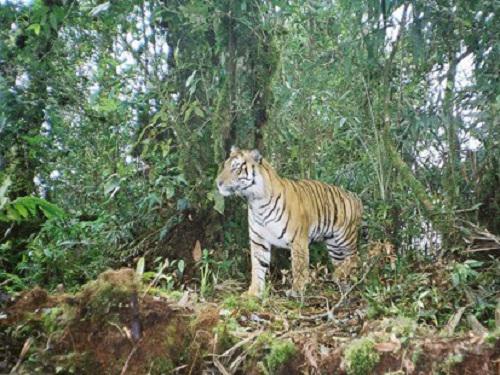Matthew Linkie
Other projects
The second grant will allow Matthew to develop the first tiger and prey population monitoring programme for KSNP, set up using a Rufford Grant in 2003.

Sumatran tiger on a ridge trial.
In May 2005, Matthew was awarded and second RSG towards this project. The second grant will allow Matthew to develop the first tiger and prey population monitoring programme for KSNP, set up using a Rufford Grant in 2003. Forest patrols and intelligence activities conducted by the KS-Tiger Protection and Conservation Units (TPCUs) have implemented and maintained law enforcement and anti-poaching efforts in and around KSNP.
This programme collaborates with all of the main governmental and non-governmental organizations working in and around KSNP. Within the monitoring program, tiger and prey relative and absolute abundance data have been collected for project Year 1 using camera traps and a newly developed detection/non-detection survey method. Data collection for Year 2 has now begun. This will enable short-term population trends to be determined, further Indonesian students to be trained and current Indonesian staff to be trained to more advanced levels.
This project aims to support KSNP management conserve tigers, their prey and the wider biodiversity by providing reliable information on the location and status of tigers, their prey and the different threat types. This will be most realistically achieved through four objectives:
•Objective 1:
Continue monitoring tiger and principal tiger prey populations for KSNP. This will provide detailed information on whether the population trends of tigers and their prey are increasing, stable or decreasing across the whole of KSNP and within key focal areas of KSNP. This will then indicate critical areas that require protection and allow the effectiveness of conservation strategies to be assessed in the future.
•Objective 2:
Develop the local capacity to query, analyse and spatially display field data
•Objective 3:
Disseminate project information to project partners and policy makers. An important part of this project is to raise the profile of the Sumatran tiger and awareness about tiger conservation in KSNP. It is hoped that this can be achieved in part by presenting the major findings of this project to international and national NGOs and Government organizations through a series of workshops and the project website.
•Objective 4:
Monitor and evaluate project results and effectiveness.